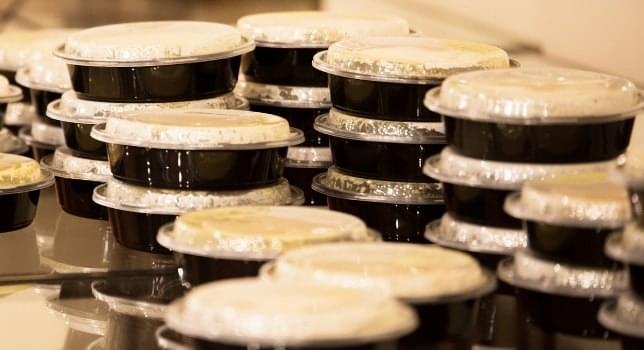Cook-in-the-pack packaging is no longer reserved for commercial applications, with widespread adoption in the consumer market too. However, this packaging type can cause numerous issues when manufacturers don’t consider the impact the high temperatures involved might have on the packaging material and the potential for Non Intentionally Added Substances (NIAS).
Regulatory requirements
Cook in the pack packaging falls under the requirements of Regulation (EC) No 1935/2004 and also Regulation (EU) No 10/2011 as amended if it contains one or more plastic layers.
Article 3 Regulation (EC) No 1935/2004 requires that packaging materials do not transfer their constituents to food in quantities which could:
- Endanger human health
- Bring about an unacceptable change in the composition of the food
- Bring about deterioration in the organoleptic characteristics thereof.
Article 19 Regulation (EU) No 10/2011 as amended allows for the presence of Non Intentionally Added Substances (NIAS) in plastic packaging whether introduced during manufacture or generated through thermal degradation of packaging components during use, but it requires that compliance with Article 3 of Regulation (EC) No 1935/2004 be assessed in accordance with internationally recognised scientific principles on risk assessment.
Performance level recommendations
- The packaging after cooking must remain intact and not result in small pieces transferring to the food (noncompliance with Article 3 of Regulation (EC) No 1935/2004
- The colour andd appearance of the packaging must remain similar to the unheated packaging
- Ink colours should not fade out or blacken.
Best practice recommendations
- Ink components are listed on the Swiss Ordinance and do not appear on the EuPIA exclusion list
- Inks are sandwiched where possible between polymer layers. Some applications may require surface printing on the non-food surface. In these cases, the inks should be specially formulated so that they do not soften or melt in the oven to the extent that the inks or its components transfer to other surfaces or the air inside the oven, at concentrations likely to be of concern, either to consumer health or the appreciation of the food.
- Recycled PET (rPET) should not be used without a suitable opinion from EFSA covering its use which has been published on the EFSA website register of questions in accordance with Regulation (EC) No 282/2008
- Inks do not contain diarylide based pigments
- Adhesion promoters are carefully selected and ink pigments are selected from a knowledge of thermal decomposition gained by research studies
- Nitrocellulose and aromatic diisocyanate based polyurethane ink binders and adhesives are not used
- Perforations of the printed film are not made in the print region
- High quality components are used, particularly in the inks with high purity pigments specially formulated for high temperature use.
- Conventional UV cured inks are not used because of the risk of migration of photoinitiators and synergists.
Further assistance
There are few inks and coatings currently available that have been specifically developed for high temperature use. Ink pigment choice is usually a critical aspect governing the suitability of printed cook in the pack packaging. Chemicals present in the packaging and those likely to be generated during use should be assessed for their toxicological risk to consumers using current best practice applied to risk assessments for NIAS.
A technical consideration of the documents available in the supply chain for all of the packaging components should form part of the risk assessment. In addition, there are numerous practical difficulties that may arise with the testing and interpretation of the legislative requirements for the particular application. Smithers have particular expertize in this field. Advice can be provided on the optimum order of conducting tests so that alterations may be made to packaging formulations, if necessary, prior to conducting key tests, in order to minimize testing costs.
Find out more about our food contact testing services.



